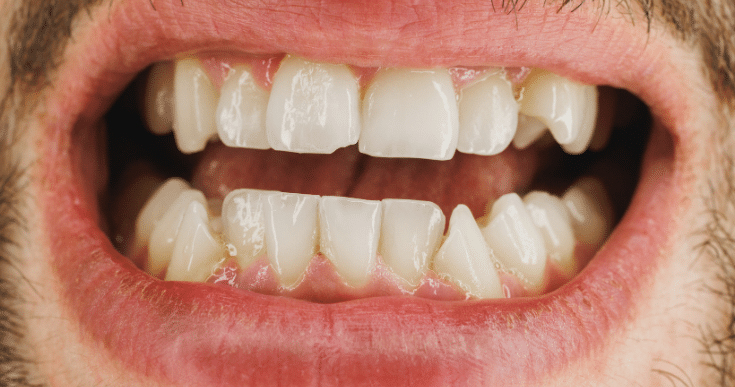
Do you have a cavity? Dental cavities are one of the most common dental problems. But don’t worry! Here is how to stop a cavity from getting worse and address your dental health needs. Cavities can be treated in many different ways, depending on their severity and location, but it is important to take action before they become more serious. In this article, we will discuss what causes cavities, how to detect them early, the different treatment options available, and tips for preventing further damage.
Causes of Dental Cavities
Dental cavities are caused by bacteria that eat away at the enamel surface of teeth over time. The main culprits behind tooth decay are acids formed from the bacteria and sugars that are found in food. When plaque, an invisible layer of bacteria, forms on your teeth, these bacteria can produce acids that dissolve the enamel and cause a hole to form.
1: Plaque Formation
Plaque is composed of saliva and food particles that collect along the gum line and between teeth. The bacteria in the plaque feed off of sugars from the foods you eat and release acid as a byproduct which causes tooth decay. Regular brushing and flossing can help remove plaque and prevent cavities from forming.
2: Dental Hygiene Habits
Good dental hygiene habits such as brushing twice daily for two minutes each time, flossing once a day, and using an antiseptic mouthwash are important for preventing cavities. Additionally, limiting sugary snacks and drinks can help reduce the amount of plaque-causing bacteria in your mouth.
3: Dental Visits
Regular visits to your dentist will also help prevent tooth decay by detecting any cavities early on. Your dentist will be able to provide advice on proper brushing and flossing techniques as well as treatment options if needed.
How To Detect Cavities Early
Early detection of cavities is key to stopping their progress before they become worse. During routine dental checkups, your dentist will look for signs of tooth decay, such as discoloration, pits or holes, and broken teeth. They may also use x-rays to look for more hidden cavities that are not visible to the naked eye.
1: Dental Exams
Your dentist will do a thorough examination of your mouth during regular checkups. This includes checking for any signs of tooth decay and inspecting your gums for signs of periodontal disease. The exam should also include an oral cancer screening to detect any abnormal lesions or tissues in the mouth.
2: Dental X-Rays
In addition to the physical exam, your dentist may also take dental x-rays to help detect cavities between your teeth that cannot be seen with the naked eye. Dental x-rays are also used to measure the progression of cavities and can provide a detailed look at what is happening beneath the surface.
3: Dental Cleanings
Regular dental cleanings are important for preventing tooth decay as they help remove plaque and bacteria from your teeth before it has a chance to cause damage. Dental cleanings can also be beneficial in detecting cavities early on so that you can take action quickly before they become worse.
Cavity Treatment Options
Once a cavity has been detected, several treatment options are available depending on the severity of the decay. Some treatments may include fillings, crowns, root canals, or even extraction. Your dentist can advise you on the best treatment option based on the severity of your cavity.
1: Dental Fillings
Dental fillings are one of the most common treatments for cavities and involve filling in a hole caused by decay with a material such as silver amalgam or composite resins. Dental fillings help to restore the strength and appearance of your teeth and can last for many years with proper care.
2: Dental Crowns
A dental crown may be needed for more severe cases of tooth decay. A dental crown is an artificial cap that is placed over the damaged tooth to restore its shape, size, and strength. Dental crowns can also help prevent further damage to the tooth and are usually made of porcelain or gold.
3: Root Canals
A root canal may sometimes be required to treat a cavity. This procedure involves removing the damaged or decayed portion of the tooth and any infected material inside it. The space is then filled with a special material before being sealed with a crown for added protection.
4: Dental Extractions
If the cavity has caused too much damage to the tooth, your dentist may recommend an extraction instead of trying to save it. Dental extractions involve the removal of the entire tooth and can be used to prevent further infection or spread of decay in other teeth. After the extraction, you will need to replace the missing tooth with either a dental implant or a bridge.
Conclusion
Cavities can be painful and cause further damage to your teeth if left untreated. The key is detecting them early so you can take the necessary steps to prevent their progression. Regular checkups and dental cleanings are essential for keeping your teeth healthy and strong and detecting cavities in their earliest stages. Dental treatments such as fillings, crowns, root canals, or extractions may be needed depending on the severity of the cavity.
FAQs:
A: You should visit your dentist every six months for a checkup and cleaning. This will help detect any cavities or other dental issues early on so that you can take action to prevent further damage.
A: If your tooth is sensitive to hot and cold temperatures, or if you experience pain when biting down, then it may be an indication of a cavity. To confirm the diagnosis, your dentist will need to perform an exam and possibly take some x-rays as well.
A: Cavities cannot be reversed, but they can be treated depending on their severity. Dental fillings are usually used for small cavities, while more severe cases may require a root canal, crown, or extraction.




